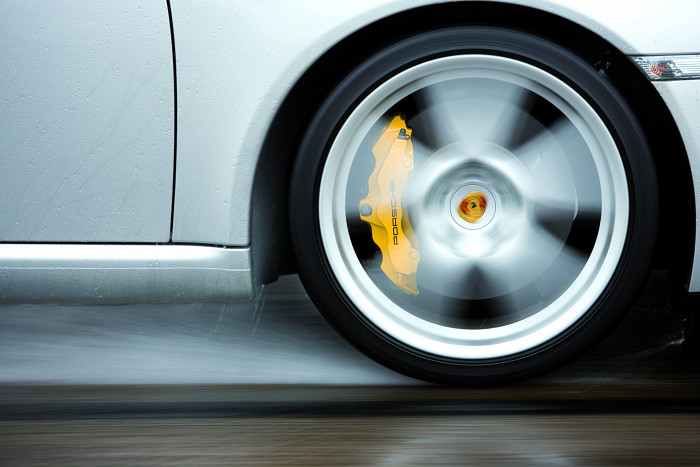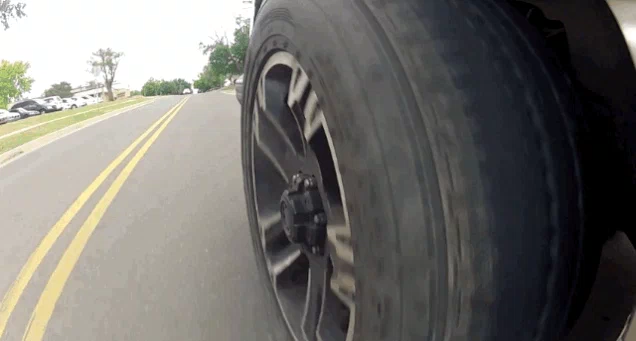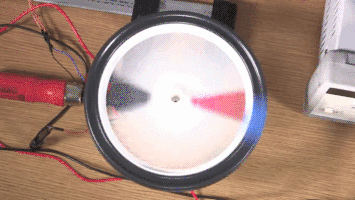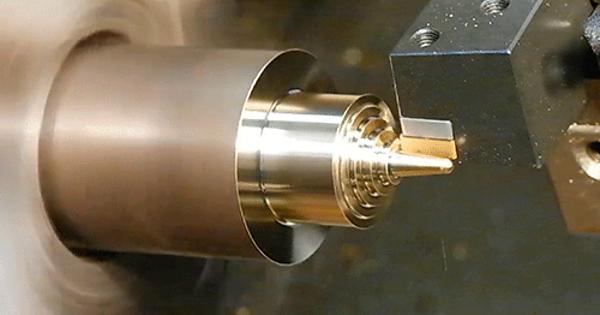How Wagon Wheel Effect Makes Object Appear To Change Directions
Wagon Wheel effect is natural phenomenon occurs with rotating objects at high speeds. There are several theories and names of the effect but none is conclusive enough.

The wagon-wheel effect is an optical illusion in which a spoked wheel appears to rotate differently from its true rotation. The wheel can appear to rotate more slowly than the true rotation, it can appear stationary, or it can appear to rotate in the opposite direction from the true rotation. This last form of the effect is sometimes called the reverse rotation effect.
This optical illusion is also known as stagecoach-wheel effect, stroboscopic effect.
The Illusion Is Not Limited To Just Flickering Light

The wagon-wheel effect is most often seen in film or television depictions of stagecoaches or wagons in Western movies, although recordings of any regularly spoked wheel will show it, such as helicopter rotors and aircraft propellers. In these recorded media, the effect is a result of temporal aliasing. It can also commonly be seen when a rotating wheel is illuminated by flickering light. These forms of the effect are known as stroboscopic effects: the original smooth rotation of the wheel is visible only intermittently. A version of the wagon-wheel effect can also be seen under continuous illumination.
A Theory Suggests That It’s Because Of The Difference In Perception Of the Frame Rate

One proposes that the visual cortex, much like a movie camera, processes perceptual input in temporal packets, taking a series of snapshots and then creating a continuous scene. Perhaps our brain processes these still images as it does frames in a movie, and our perceptual mistake results from a limited frame rate.
While some form of temporal parcing certainly occurs in the brain, it isn't clear that this is sufficient to explain the wagon-wheel effect in continuous light.
Another Experiment Suggests That Movie-Camera Theory Doesn’t Apply In Some Cases
SOURCE = "Paddington Brown"
One key experiment shows that two identical, adjacent spinning wheels are reported by subjects as switching direction independently of each other. According to the movie-camera theory, the two wheels should not behave differently, since the frame rate is the same for everything in the visual field.
Due To This Effect Some Rotary Machines Might Look Like They Are Not Turning Which Is A Health Hazard

A factory that is lit with basic fluorescent lighting will have a flicker of twice the mains frequency, either at 100 or 120 Hz (depending on country); thus, any machinery rotating at multiples of this frequency may appear to not be turning. Seeing that the most common types of AC motors are locked to the mains frequency, this can pose a considerable hazard to operators of lathes and other rotating equipment.
This Problem can be solved with multiple phases and modern lighting solutions, which are flicker free.
Popular Posts
What Is Trypophobia – A Disgust More Than Fear
"I can't really face small, irregularly or asymmetrically placed holes, they make me like, throw up in my mouth, cry a little bi...
Chandan Roy
16 Interesting Facts About Ambidextrous People
A lefty or left-handed uses his left hand more naturally and dominantly than the right hand. And the righty or right-handed is o...
Ethan Stephans
20 Interesting Facts About Meteoroid, Meteor and Meteorite
Watching celestial objects is a true delight. It is still fun to catch a sight of shooting stars when we grow up. A second of th...
Swati Bhandari








